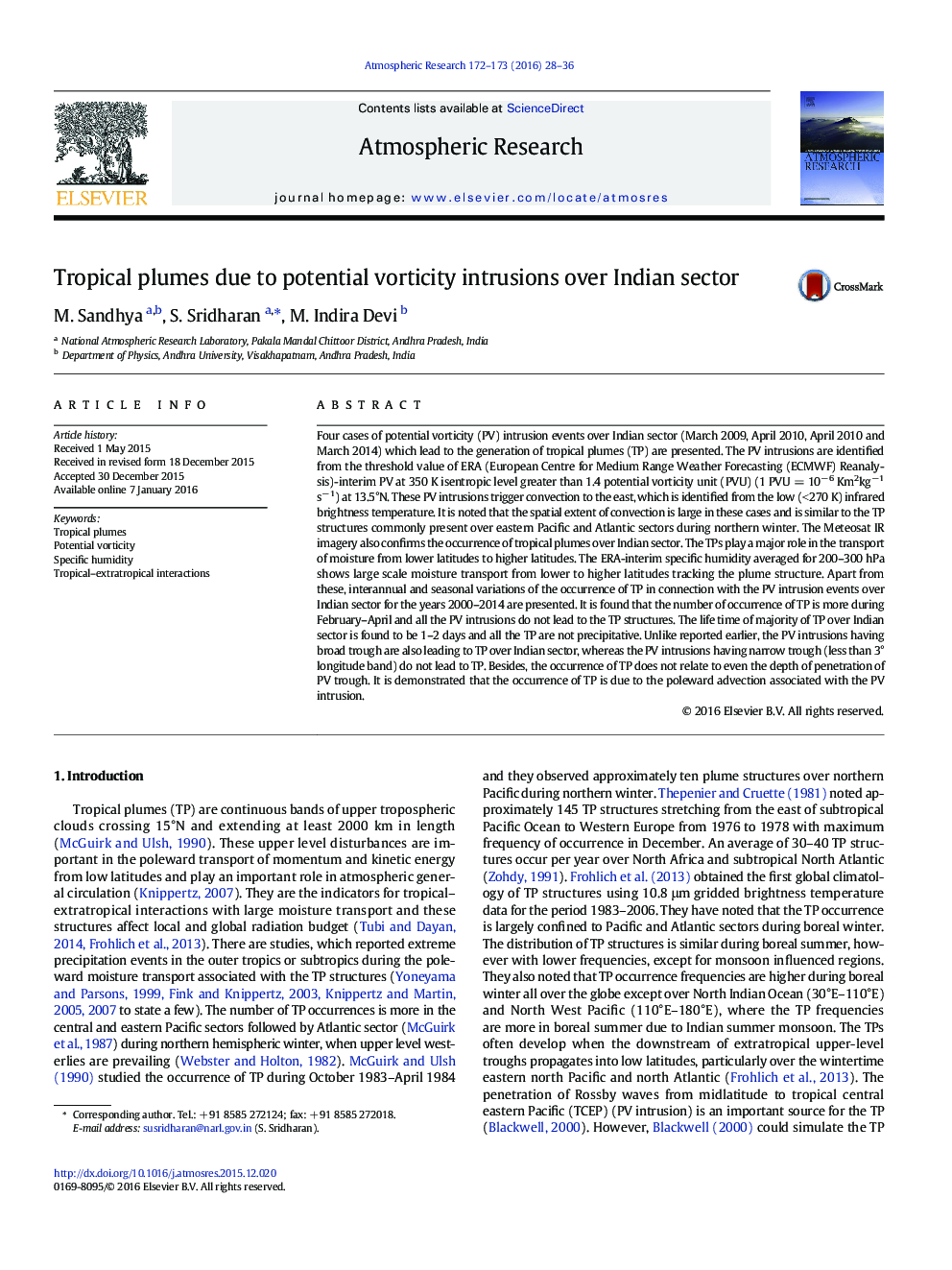| کد مقاله | کد نشریه | سال انتشار | مقاله انگلیسی | نسخه تمام متن |
|---|---|---|---|---|
| 6343104 | 1620505 | 2016 | 9 صفحه PDF | دانلود رایگان |
عنوان انگلیسی مقاله ISI
Tropical plumes due to potential vorticity intrusions over Indian sector
ترجمه فارسی عنوان
طوفان گرمسیری به علت نفوذ بالقوه سوپریشی در بخش هندی
دانلود مقاله + سفارش ترجمه
دانلود مقاله ISI انگلیسی
رایگان برای ایرانیان
کلمات کلیدی
طوفان گرمسیری، سرریز احتمالی، رطوبت خاص تریپیکال تعاملات بیرونی
موضوعات مرتبط
مهندسی و علوم پایه
علوم زمین و سیارات
علم هواشناسی
چکیده انگلیسی
Four cases of potential vorticity (PV) intrusion events over Indian sector (March 2009, April 2010, April 2010 and March 2014) which lead to the generation of tropical plumes (TP) are presented. The PV intrusions are identified from the threshold value of ERA (European Centre for Medium Range Weather Forecasting (ECMWF) Reanalysis)-interim PV at 350 K isentropic level greater than 1.4 potential vorticity unit (PVU) (1 PVU = 10â 6 Km2kgâ 1 sâ 1) at 13.5°N. These PV intrusions trigger convection to the east, which is identified from the low (< 270 K) infrared brightness temperature. It is noted that the spatial extent of convection is large in these cases and is similar to the TP structures commonly present over eastern Pacific and Atlantic sectors during northern winter. The Meteosat IR imagery also confirms the occurrence of tropical plumes over Indian sector. The TPs play a major role in the transport of moisture from lower latitudes to higher latitudes. The ERA-interim specific humidity averaged for 200-300 hPa shows large scale moisture transport from lower to higher latitudes tracking the plume structure. Apart from these, interannual and seasonal variations of the occurrence of TP in connection with the PV intrusion events over Indian sector for the years 2000-2014 are presented. It is found that the number of occurrence of TP is more during February-April and all the PV intrusions do not lead to the TP structures. The life time of majority of TP over Indian sector is found to be 1-2 days and all the TP are not precipitative. Unlike reported earlier, the PV intrusions having broad trough are also leading to TP over Indian sector, whereas the PV intrusions having narrow trough (less than 3° longitude band) do not lead to TP. Besides, the occurrence of TP does not relate to even the depth of penetration of PV trough. It is demonstrated that the occurrence of TP is due to the poleward advection associated with the PV intrusion.
ناشر
Database: Elsevier - ScienceDirect (ساینس دایرکت)
Journal: Atmospheric Research - Volumes 172â173, 15 Mayâ1 June 2016, Pages 28-36
Journal: Atmospheric Research - Volumes 172â173, 15 Mayâ1 June 2016, Pages 28-36
نویسندگان
M. Sandhya, S. Sridharan, M. Indira Devi,
